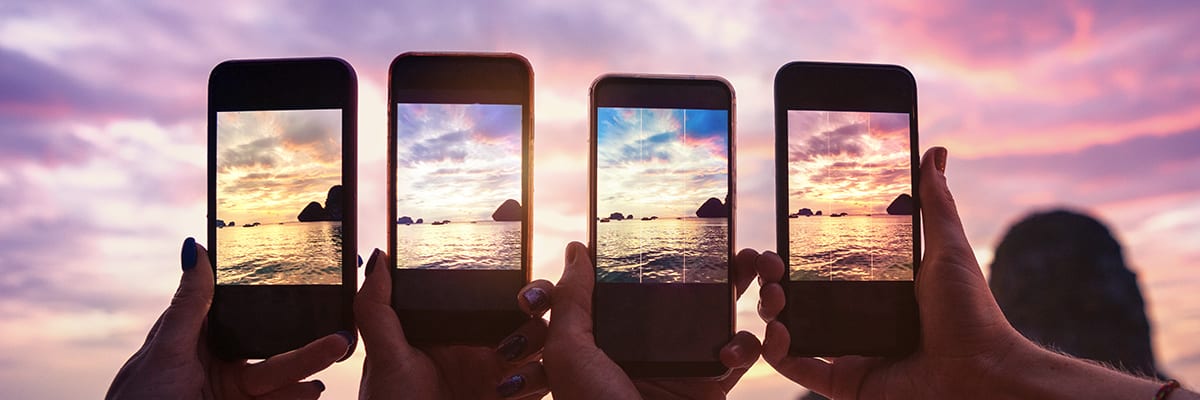
Return navigate_next
A Quick Guide for Improving Basic Phone Photography Skills
September 21, 2021 *
The best phone cameras can rival some capabilities of many digital cameras. Mostly, however, they don't provide the same amount of control that a high-quality camera can provide. This guide will teach you how to improve your phone photography and capture stunning images with a smartphone instead of a digital camera.
Are Digital Cameras Better Than Phone Cameras?
As the Digital Photography School explains, phones usually only offer one aperture value, so users can't experiment with various exposure times. In addition, phones usually also rely on smaller sensors than the best digital cameras, limiting image quality.

Overriding the limitations of phone cameras, many photographers will say that their best camera is always the one they've got in their pocket. Since most people carry their phones with them everywhere, they use their phone cameras to take a lot of photos.
Tips to Improve Phone Photography Skills
Consider these suggestions to improve your phone photography skills.
1. Improve Photo Composition With Gridlines
The rule of thirds refers to composing photos along a three-by-three gridline, like a tic-tac-toe board. For some simple examples:
- Landscapes may appear well balanced if the sky either consumes one-third or two-thirds of the entire image.
- For a portrait, consider centering the most important element, like the head, around the middle square of the grid.
HubSpot suggested turning grid settings on in the phone camera to make it easier to adhere to the rule of thirds. Also, note that the rule of thirds should stand as a guideline and not a law. Still, examine professional photographs to see how often they do adhere to this rule.
2. Don't Always Use Zoom
Manufacturers often emphasize improved zoom capabilities as a selling feature on the latest phones. But, unfortunately, new photographers may rely on this useful feature too much.

Instead of always using zoom, experiment with focusing on the subject by moving closer or shooting from a different perspective to see if that improves overall photo quality. Of course, photographers can always crop the picture later to make the subject the center of attention and achieve the right balance.
3. Consider Purchasing a Smartphone Tripod
This suggestion might appear to toss out the idea of keeping everything in a pocket. However, some mobile tripods fold up, so they don’t add much more of a burden than the phone itself. At the same time, they eliminate the common problem of trying to hold the camera steady while snapping the shot. Also, they make it a lot easier to snap photos with the photographer as a subject.
How to Protect a Good Phone Camera
Most importantly, keep the lens clean. When stuffed in purses and pockets, phone lenses can pick up lint and dust. Sometimes, the photographer won't notice until they start editing the images. Unfortunately, by then, it's often too late for a do-over.
Good phone cases may offer transparent covers for the lens. In that case, just make sure to clean the cover. A soft, microfiber cloth should do the job of cleaning the lens or the lens cover most of the time.
The best way to protect your phone camera from damage is to purchase an extended smartphone warranty from Upsie.

Buy the Best Smartphone Extended Warranty From Upsie
An Upsie smartphone warranty protects your smartphone from damage, allowing you to focus on getting the best picture. With an Upsie warranty, your smartphone is protected from:
- Cracks and damage from drops
- Camera failure
- Touchscreen failure
- Manufacturing defects
- Liquid damage
- And more
In addition, Upsie’s warranties cost just $9.99 per month. They offer a better price paired with premium warranty protection. Upsie offers affordable prices, low deductibles, broad protection, and 24-7 claims to give you peace of mind.
Whether you’re a budding phone photographer or an expert, Upsie protects your smartphone camera from damage and ensures peace of mind.
Learn More About Smartphones:
* This article is over 6 months old and may or may not be updated.
